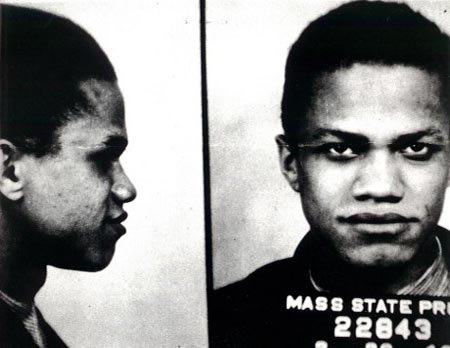This past Saturday marked the 50th anniversary of the assassination of El-Hajj Malik El-Shabazz, better known as Malcolm X. He was a leader of the controversial religious movement Nation of Islam, a human rights activist and founder of Muslim Mosque, Inc.


Photo: malcolmx.com
In 1925, Malcolm Little was born in Omaha, Nebraska. Due to threats of violence from the Ku Klux Klan, the Little family moved away to Michigan where the Black Legion, another white racist group, harassed the family and burned their house. In 1931, Little's father was killed in what was ruled as a streetcar accident, but his mother believed her husband was murdered by the Black Legion. In 1938, his mother had a mental breakdown and was placed in the Kalamazoo State Hospital. Malcolm and his siblings were placed in foster care.

Photo: pbs.org
Malcolm attended a white high school where he was the only black student. He excelled in his studies, but he later described his experience as feeling like the class pet. When he was 14, his English teacher asked him what he wanted to do after school and he said he wanted to be a lawyer. His teacher told him that he needed to be realistic and suggested he pursue carpentry instead. This teacher's comment, combined with his troubled childhood, became a turning point and he dropped out of school.

Photo: triangulomag.com
Little was arrested in 1946 for larceny and sentenced to ten years in prison. While in prison, he was introduced to a small African American sect of Islam. The Nation of Islam was founded in 1930 by Wallace D. Fard Muhammad and its goal was to improve the lives of African Americans, especially economically. By the time of his parole in 1952, Malcolm had converted to NOI and had changed his last name to "X" because he felt "Little" was a slave name.

Photo: macmccanntx.com
Malcolm X became a leader in the church and is credited with attracting thousands of new followers. Eventually, though, he became disillusioned with the Nation of Islam because he felt the actions of Elijah Muhammed, the leader of the group, went against the beliefs of their religion. In 1964, Malcolm X left the Nation of Islam and went on a pilgrimage to Mecca. While on his trip, he experienced a number of different cultures, became amenable to integration and converted to Sunni Islam.
Photo: nofi.fr
On February 20, 1965, three gunmen rushed the New York City stage where Malcolm X was speaking and shot and killed him. All three of the assassins were members of the Nation of Islam. Today, Malcolm X is viewed as one of the most influential figures in American history.

Photo: life.time.com
"Power in defense of freedom is greater than power on behalf of tyranny and oppression, because power, real power, comes from our conviction which produces action, uncompromising action." -Malcolm X
































